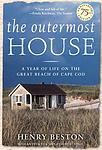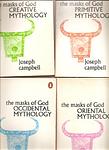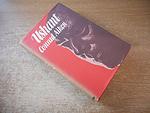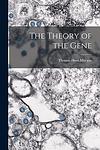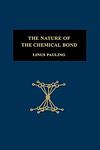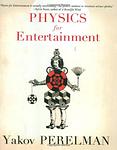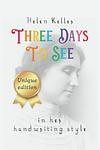The Greatest "Nonfiction" Books Since 1900
Click to learn how this list is calculated.
This list represents a comprehensive and trusted collection of the greatest books. Developed through a specialized algorithm, it brings together 300 'best of' book lists to form a definitive guide to the world's most acclaimed books. For those interested in how these books are chosen, additional details can be found on the rankings page.
Genres
Countries
Date Range
Reading Statistics
Click the button below to see how many of these books you've read!
Download
If you're interested in downloading this list as a CSV file for use in a spreadsheet application, you can easily do so by clicking the button below. Please note that to ensure a manageable file size and faster download, the CSV will include details for only the first 500 books.
Download-
1951. The Outermost House by Henry Beston
"The Outermost House" is a captivating narrative that chronicles a year spent living on the outer beach of Cape Cod. The author offers a profound, meditative reflection on the natural world and the interplay between humanity and nature. Through detailed observations of the changing seasons, wildlife, and the ocean, the book explores themes of solitude, the rhythm of the natural world, and the deep, intrinsic connections humans share with the environment. The author's lyrical prose captures the beauty and the harshness of the coastal landscape, making it a timeless reflection on the importance of preserving natural spaces.
-
1952. The Long Loneliness by Dorothy Day
"The Long Loneliness" is an autobiographical account that explores the journey of a prominent American journalist and social activist as she navigates through the complexities of her life, from her early experiences of loneliness and search for belonging to her profound conversions and commitment to social justice. The narrative delves into her passionate involvement in the labor movement, her pivotal role in founding a movement that combines radical social change with the Catholic faith, and her enduring efforts to live out the principles of community and compassion. The book is a reflection on personal struggle, spiritual growth, and the power of faith and community in addressing social issues.
-
1953. The Boys Of Summer by Roger Kahn
"The Boys of Summer" is a nostalgic and evocative account of the Brooklyn Dodgers in the 1950s, a team that captured the hearts of its fans with its remarkable talent and tumultuous history. The book intertwines the author's personal experiences and memories of growing up in Brooklyn with profiles of the team's most iconic players. It explores the impact of baseball on both the players and their fans, capturing the bittersweet changes and enduring spirit of the era. The narrative not only celebrates the triumphs on the field but also delves into the players' lives after their baseball careers, offering a poignant look at their challenges and successes in the years that followed.
-
1954. Their Finest Hour by Winston Churchill
"Their Finest Hour" is the second volume in a series of books that recount the historical events of World War II from the perspective of a key political leader. This volume focuses on the period of intense conflict in 1940, particularly detailing the Battle of Britain and the strategic decisions and leadership that were pivotal during this time. It provides an in-depth look at the challenges faced, the resilience of the British people, and the speeches that rallied a nation under siege, offering insights into military strategies and the personal resolve of the author during one of Britain's most daunting periods.
-
1955. Memoirs Of A Dutiful Daughter by Simone de Beauvoir
"Memoirs of a Dutiful Daughter" is an autobiographical account that delves into the early years of its author, exploring her evolution from a precocious and introspective child in a bourgeois French family to a rebellious and intellectually voracious student, culminating in her formative relationships and her burgeoning identity as a writer and philosopher. The narrative captures the struggles of intellectual and personal awakening, set against the backdrop of the rigid societal expectations of early 20th-century France, and provides a deep insight into the factors that shaped one of the leading feminist and existentialist thinkers of that time.
-
1956. The Masks Of God by Joseph Campbell
"The Masks of God" is a comprehensive exploration of the world's mythologies, delving into the symbolic and functional roles that myths have played in various cultures throughout history. The author examines the origins and development of myths, tracing their evolution from the primitive to the modern era, and discusses how these myths reflect the spiritual and psychological insights of the human race. The work is divided into multiple volumes, each focusing on different mythological traditions, including primitive mythology, Oriental mythology, Occidental mythology, and creative mythology, providing a thorough analysis of the ways in which myths serve as a vital and universal language of the human experience.
-
1957. The Book Of Tea by Kakuzō Okakura
"The Book of Tea" explores the intricate and nuanced philosophy behind the Japanese tea ceremony, presenting it as a blend of Zen Buddhism, Taoism, and the ethics of the Samurai. The author delves into the aesthetic and cultural significance of tea in Japan, discussing how it influences various aspects of life and art, from architecture to flower arranging. The book also reflects on the broader implications of tea as a spiritual and meditative practice, emphasizing simplicity, naturalness, and a profound appreciation for the beauty of the everyday. Through this lens, the tea ceremony becomes a metaphor for a harmonious and mindful approach to life.
-
1958. Ill Met By Moonlight by W. Stanley Moss
"Ill Met By Moonlight" is a thrilling World War II memoir that recounts the daring mission of British Special Operations officers who infiltrated occupied Crete to kidnap a German general. The narrative, based on the author's own experiences, vividly details the planning and execution of the operation, the challenges faced by the team as they evaded enemy forces, and the strong bonds formed with the local Cretan resistance fighters. This gripping account not only highlights the audacity and bravery of the mission but also showcases the strategic importance of Crete and the complexities of guerrilla warfare.
-
1959. Ushant by Conrad Aiken
"Ushant" is an autobiographical novel that delves into the introspective journey of a poet as he reflects on his life, friendships, and the intellectual and artistic circles he has moved in. Through a series of lyrical essays and meditative passages, the protagonist examines his relationships with contemporaries and the impact of historical events on personal and artistic expression. The narrative is rich with philosophical musings and poetic reflections, offering a deep exploration of the author's thoughts on identity, creativity, and the interplay between life and art.
-
1960. The Computer And The Brain by John Von Neumann
"The Computer and the Brain" explores the similarities and differences between computing machines and the human brain, delving into the fundamental principles of the then-nascent field of computer science and comparing them with the understanding of neurology. The work discusses how the architecture and operation of computers can be seen as analogous to neural structures and functions, offering insights into data processing, memory, and the logical organization of both systems. Despite being written in the mid-20th century, the book provides a visionary perspective on the potential for future developments in computing and artificial intelligence, inspired by biological processes.
-
1961. The Theory Of The Gene by Thomas Hunt Morgan
"The Theory of the Gene" delves into the foundational aspects of genetics, exploring the behavior and transmission of genes that determine hereditary traits. The book synthesizes research and experiments, particularly those involving the fruit fly Drosophila melanogaster, to elucidate the chromosomal theory of inheritance. It discusses how genes are arranged linearly on chromosomes and how their interactions affect the appearance and function of organisms. This work played a crucial role in establishing genetics as a key scientific discipline, providing insights into the mechanisms of genetic linkage, recombination, and mutation.
-
1962. The Nature Of The Chemical Bond by Linus Pauling
This book is a seminal work in the field of chemistry, providing an in-depth exploration of the concept of the chemical bond, including its properties and the principles governing its behavior. It synthesizes quantum mechanics with chemical phenomena, offering a comprehensive framework for understanding molecular structure and reactivity. The text introduces and elaborates on various types of bonding, such as ionic, covalent, and metallic bonds, and discusses the effects of these interactions on the physical properties of substances. This influential work has significantly shaped modern chemistry's approach to studying molecules and their interactions.
-
1963. Physics For Entertainment by Yakov Perelman
"Physics for Entertainment" is a captivating book that presents complex physics concepts in an engaging and accessible manner. Aimed at both young readers and adults, the book uses everyday scenarios and simple experiments that can be performed at home to explain the principles of physics. Covering a wide range of topics from mechanics to optics, the author demystifies scientific phenomena and encourages a deeper understanding of the world around us through playful yet educational explorations. This work not only educates but also entertains, sparking curiosity and a lasting interest in the field of physics.
-
1964. The Social Function Of Science by J. D. Bernal
"The Social Function of Science" explores the role and impact of science in society, arguing that scientific research should not be conducted in isolation but rather integrated with societal needs. The book examines how science has historically been shaped by economic and military demands and advocates for a planned scientific effort directed towards social welfare and progress. It emphasizes the importance of collaboration among scientists internationally and the need for public understanding and control of science to ensure it serves common social objectives, rather than just elite interests.
-
1965. Black On White by M. Ilin
"Black on White" is an engaging exploration of the history and significance of paper, tracing its development from ancient times to the modern era. The book delves into the various ways paper has been made and used across different cultures, highlighting its role in the advancement of literacy, art, and communication. Through a rich narrative, the reader gains an appreciation for paper's profound impact on society and its continuing relevance in a digital age, making it a compelling read for anyone interested in the intersections of history, technology, and culture.
-
1966. Dawn Blossoms Plucked At Dusk by Xun Lu
"Dawn Blossoms Plucked at Dusk" is a reflective collection of essays that delve into the author's nostalgic reminiscences of his youth and philosophical musings on life, literature, and human nature. Written in a lyrical and introspective style, the work explores themes of change, the passage of time, and the bittersweet nature of memory. Through personal anecdotes and thoughtful reflections, the author examines the complexities of growing up and the inevitable loss of innocence, offering insights into the universal human experience and the poignant beauty found in fleeting moments.
-
1967. Red Star Over China by Edgar Snow
"Red Star Over China" is a seminal work of journalism that provides a detailed account of the Chinese Communist Party (CCP) and the rise of Mao Zedong during the 1930s. Based on the author's extensive interviews with Mao and other Communist leaders while living with them at their revolutionary base in Yan'an, the book offers a firsthand glimpse into the personalities, events, and circumstances that shaped the early Communist movement in China. The narrative not only demystifies Mao and his ideological and military strategies but also provides insights into the hardships faced by the Red Army and their resilience in the struggle against both the Nationalist forces and Japanese invaders. This work played a crucial role in shaping Western perceptions of Mao and the Chinese Communist revolution.
-
1968. Fabre's Book Of Insects by Jean Henri Fabre
"Fabre's Book of Insects" retells the observations and reflections of a renowned entomologist, vividly describing the intriguing behaviors and unique lifestyles of various insects. Through a series of beautifully crafted essays, the book delves into the intricate world of creatures such as beetles, cicadas, and butterflies, among others. The author's meticulous research and passionate narrative style bring the tiny inhabitants of the insect world to life, revealing their complexities and the marvels of nature often overlooked in everyday life. This work not only serves as an educational resource but also as a tribute to the wonders of the natural world, encouraging a deeper appreciation and understanding of its smallest creatures.
-
1969. Three Days To See by Helen Keller
The essay "Three Days to See" reflects on what the author would choose to experience if granted the ability to see for just three days. The author, who is blind and deaf, contemplates the value and beauty of sight, expressing a profound appreciation for the visual world. The narrative emphasizes the importance of not taking one's senses for granted and encourages readers to cherish and make the most of every moment. Through a detailed itinerary for the three days, the author highlights the everyday wonders often overlooked by those who can see, advocating for a deeper appreciation of the simple joys and beauty surrounding us.
-
1970. Israel And The Dead Sea Scrolls by Edmund Wilson
This book provides an insightful exploration into the discovery and significance of the Dead Sea Scrolls, ancient texts uncovered near the shores of the Dead Sea, which have profound implications for our understanding of Jewish history and the development of early Christianity. The author delves into the archaeological context of the scrolls, the content and interpretation of the texts themselves, and the broader historical implications, particularly how these findings relate to the state of Israel and its historical narrative. The work also discusses the academic and political controversies surrounding the scrolls' accessibility and interpretation, offering a comprehensive overview of one of the 20th century's most important archaeological finds.
-
1971. The Trial Of Charles I by C. V. Wedgwood
"The Trial of Charles I" explores the dramatic and unprecedented trial of King Charles I of England, who was charged with high treason against his own subjects. The book delves into the political and military conflicts that led to the trial, providing a detailed account of the legal proceedings and the king's defense. It also examines the broader implications of the trial for the concept of monarchy and the rule of law, highlighting the intense debates and ideological divisions of the time. The narrative captures the tension and gravity of the moment when a king was held accountable by his people, culminating in his execution and the temporary abolition of the monarchy.
-
1972. Small Talk At Wreyland by Cecil Torr
"Small Talk at Wreyland" is a collection of essays that provide a detailed and charming account of life in Wreyland, a small hamlet in Devon, England. The author compiles notes, anecdotes, and family documents to paint a vivid picture of rural English life in the late 19th and early 20th centuries. The book captures the customs, conversations, and characters of the area, offering insights into the social history and traditions of the time, and preserving the memory of a way of life that has since changed dramatically.
-
1973. The Surprise Of Cremona by Edith Templeton
"The Surprise of Cremona" is a travel memoir that offers an engaging and vividly detailed account of the author's journey through Northern Italy, focusing particularly on the city of Cremona. Known for its rich history in violin making, the narrative delves into the city's artistic and architectural treasures, exploring its churches, museums, and local customs. The author's sharp observations and witty prose provide a personal and insightful exploration of Italian culture, making it an enjoyable read for those interested in travel and the nuanced beauties of Italy.
-
1974. Fame And Obscurity by Gay Talese
"Fame and Obscurity" is a compelling collection of profiles and essays that delve into the lives of both renowned and ordinary individuals, exploring the nuances of public recognition and anonymity. The author masterfully captures the essence of his subjects, ranging from famous figures like Frank Sinatra to the lesser-known denizens of New York City, such as the workers on the Brooklyn Bridge and the inhabitants of the city's bustling streets. Through a series of vivid portraits, the book offers a profound commentary on the nature of fame, success, and the human condition, highlighting the contrasts and intersections between visibility and obscurity in American society.
-
1975. Berlin Diary by William L. Shirer
"Berlin Diary" is a firsthand account of the rise of Nazi Germany and the early years of World War II as witnessed by an American journalist living in Berlin. The diary entries, spanning from 1934 to 1941, provide a detailed and personal observation of the events and atmosphere in Germany and across Europe during this tumultuous period. The author captures the impact of Nazi propaganda, the chilling transformation of society under totalitarian rule, and the international tensions leading up to and during the early stages of the war. His insights offer a crucial historical perspective on the inner workings and psyche of the Third Reich.
Reading Statistics
Click the button below to see how many of these books you've read!
Download
If you're interested in downloading this list as a CSV file for use in a spreadsheet application, you can easily do so by clicking the button below. Please note that to ensure a manageable file size and faster download, the CSV will include details for only the first 500 books.
Download